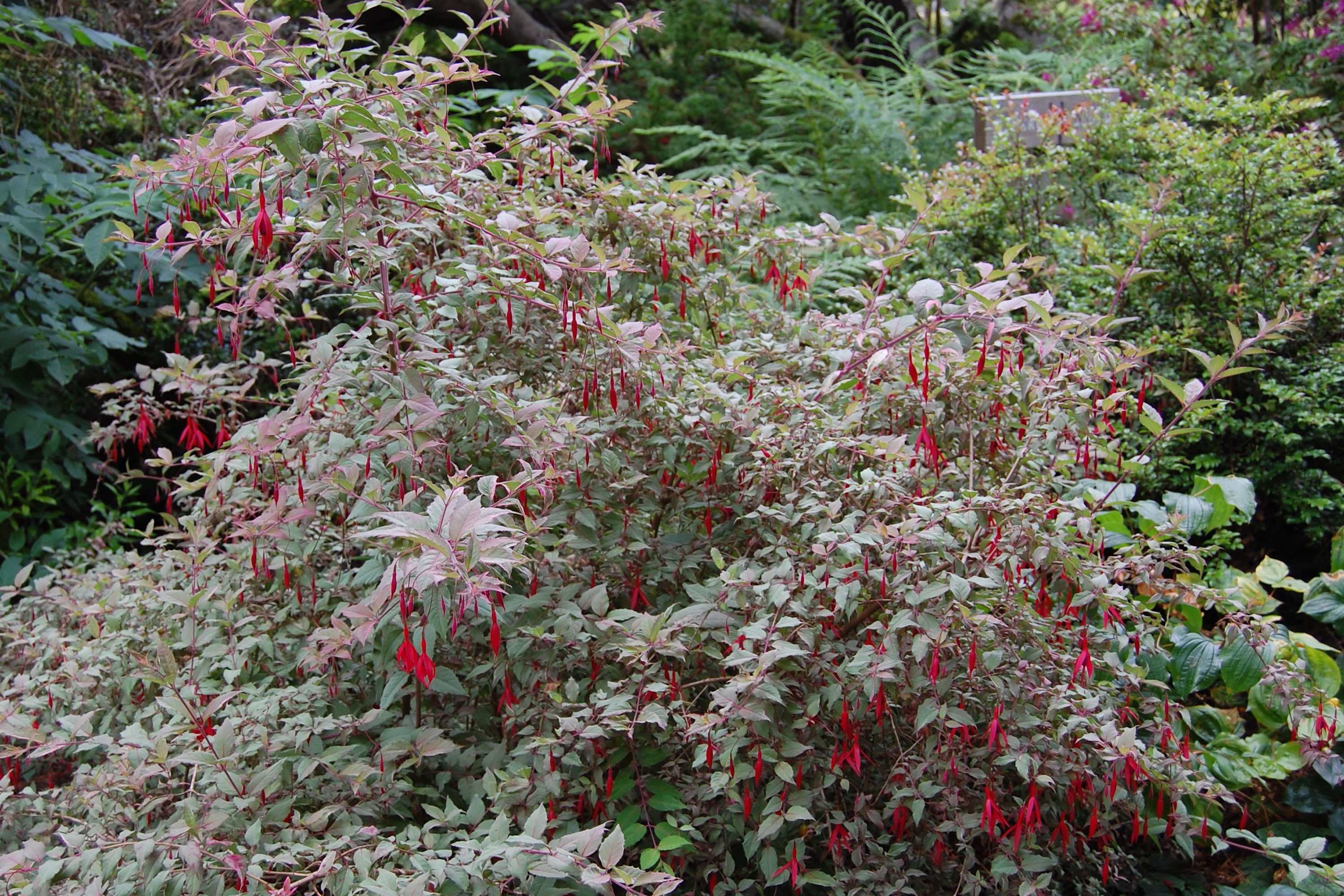Fuchsia magellanica var. gracilis 'Versicolor' (v)
Approx. 0.5 litre pot
About this cultivar:
Fuchsia magellanica var. gracilis 'Versicolor' (v) has small, grey-green leaves variably margined with cream, pink flush when young; red and purple flowers. I think they look kinda gray as they get older. The specific epithet Gracilis refers to 'slender' or 'graceful' I think referring to the slender, arching branches and small ovate leaves.
Anna Pavord says:
“Fuchsia magellanica 'Tricolor' is a terrific garden plant with small leaves of soft greenish-grey, tinged with pink and edged in creamy-white. It makes a good backdrop for blue agapanthus. The Plant Finder lists 'Tricolor' separately from Fuchsia magellanica 'Versicolor' but the AGM judges thought that in the trial, they appeared identical.
Whatever the name, the bush will try to revert back to its plain green beginnings. Cut out these growths quickly. Because the green leaves have more chlorophyll in them than the variegated ones, they grow more vigorously and before you know it, the whole bush has turned.”
Personally I would bother cutting back, life is too short and I think the green-grey foliage looks better with less cream!
- Position: Full sun, partial shade
- Soil: Almost any soil
- Flowers: July, August, September, October
- Other features: Royal Horticultural Society Award of Garden Merit (RHS AGM), Bees and Butterflies
- Hardiness: H4 - Hardy through most of the UK (-10 to -5°C)
- Habit: Clump forming, bushy
- Foliage: Deciduous
- Height: 60 - 90 cm (2 - 3 ft)
- Spread: 60 - 90 cm (2 - 3 ft)
- Time to full growth: 2 to 5 years
- Plant type: Herbaceous Perennial, shrub
- Colour: Green, red, purple
- Goes well with: Everything!
About this genus:
Fuchsia (few-che-a) is a genus of flowering plants that consists mostly of shrubs or small trees. There are over 110 recognized species. The first, Fuchsia triphylla, was discovered on the Caribbean island of Hispaniola (present day Dominican Republic and Haiti) about 1696 by the French monk and botanist, Charles Plumier during his third expedition to the Greater Antilles. He named the new genus after the renowned German botanist Leonhart Fuchs.
The Fuchsias we grow and sell are perennial and hardy - they are all growing away in our own garden. They are easy to grow once they are established - they will take almost any situation or soil that isn't too extreme. They provide continual flowers from July until late autumn, when the first frosts arrive. They come into their own in autumn because they enjoy cooler temperatures and shorter days. The Autumn light also enhances the rich mixture of pinks, reds, peaches and whites in the garden. Eventually most will die back for the winter - usually when a hard frost kills the upper part of the plant, however they will start growing from the base again when the next spring comes!
Fuchsias are versatile plants - although not native they have naturalized in many parts of this world, for instance along the beautiful Antrim Coast. They can often been seen growing wild. It is for this reason that I like them poking in and around hedges for a natural look. However the common use is as stand alone specimen plant - it is really up to you!


